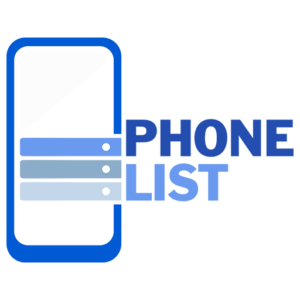Knowing your ideal customer is more important than you think, and storytelling is no exception. You can start asia mobile number list by asking yourself questions like: Who wants to hear the story? Who will benefit and respond most strongly? To create a compelling story, you must understand your readers and who will respond and take action.
Before getting creative on paper, do a little research on your target market. This process will familiarize this software does allow you to manage you with who would be reading, watching, or listening to your story. It will also provide direction or guidance for the next steps.
Choose the type of story
Very important! Good stories come in all sizes, colors, and flavors. That’s why there are appropriate ways to tell them for each platform (be it Facebook, YouTube, Instagram, etc.). Here are some ways to tell them:
- In writing: through blogs, articles, or books. These are the most common and generally the cheapest to create, as they require nothing more than a word processor, a lot of imagination, and, of course, this guide.
- By audio: in short, a podcast. It’s another very affordable way to tell stories in marketing, and its consumption is on the rise, making it a great opportunity.
- Digital: These are told through a variety of media, such as videos, animations, interactive stories, and even games. This is probably the most far-reaching option, but also the most expensive to produce.
- Word of mouth: through a presentation, a speech, a TEDTalk. They generally require some practice, as they are delivered on the spot, without editing.
Define your core message
Whether your story is one page or twenty, it must have a central message. It’s the foundation and key to a successful story. Here are more questions to help you define it: Is your story selling a product? Which one? Is it trying to explain a service or justify a problem? What’s the point of your story?
A tip: To help define your central message, try to summarize your story in six to ten words. If you can’t do that, it doesn’t have a central message.
Place a good Call-To-Action
What do you want your audience to do after reading or learning about your story? Your core message and call to action ( CTA ) are similar, so in your planning, place them together to ensure they align.
Your story will most likely debut on social media or the internet in general. That’s why it’s important to cuba business directory prepare to invite customers to engage with you through a newsletter, purchases, requests for information, and more.
Share your story
The final step is, obviously, sharing the result of your storytelling process. Depending on the medium you’ve chosen, it’s almost always a good idea to share your story on social media and via email. Written stories can also be promoted on your blog or through guest posts on other publications. Digital stories can be shared on YouTube, TikTok, and Vimeo. Finally, while spoken stories are best delivered in person, you can record a live presentation to share on social media.
The more places you share your story, the more engagement you’ll get , and storytelling will become a successful marketing strategy for your startup.
We hope this short storytelling guide inspires you to share your business’s story. Remember, the worst stories are those left untold, so don’t be afraid to step outside the box and implement this marketing campaign. You’ll be surprised at how effective it is to sell or promote yourself through storytelling.






